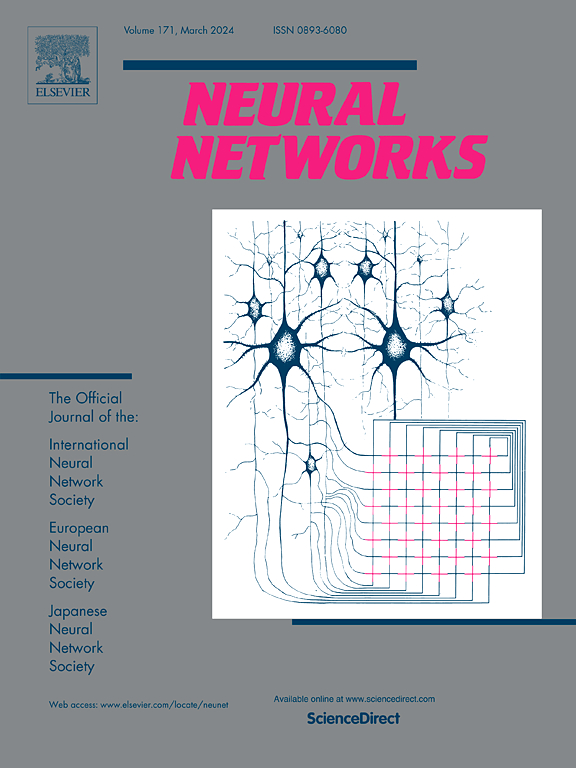Quantum-inspired neural network with hierarchical entanglement embedding for matching
IF 6.3
1区 计算机科学
Q1 COMPUTER SCIENCE, ARTIFICIAL INTELLIGENCE
引用次数: 0
Abstract
Quantum-inspired neural networks (QNNs) have shown potential in capturing various non-classical phenomena in language understanding, e.g., the emgerent meaning of concept combinations, and represent a leap beyond conventional models in cognitive science. However, there are still two limitations in the existing QNNs: (1) Both storing and invoking the complex-valued embeddings may lead to prohibitively expensive costs in memory consumption and storage space. (2) The use of entangled states can fully capture certain non-classical phenomena, which are described by the tensor product with powerful compression ability. This approach shares many commonalities with the process of word formation from morphemes, but such connection has not been further exploited in the existing work. To mitigate these two limitations, we introduce a Quantum-inspired neural network with Hierarchical Entanglement Embedding (QHEE) based on finer-grained morphemes. Our model leverages the intra-word and inter-word entanglement embeddings to learn a multi-grained semantic representation. The intra-word entanglement embedding is employed to aggregate the constituent morphemes from multiple perspectives, while the inter-word entanglement embedding is utilized to combine different words based on unitary transformation to reveal their non-classical correlations. Both the number of morphemes and the dimensionality of the morpheme embedding vectors are far smaller than the counterparts of words, which would compress embedding parameters efficiently. Experimental results on four benchmark datasets of different downstream tasks show that our model outperforms strong quantum-inspired baselines in terms of effectiveness and compression ability.
基于层次纠缠嵌入匹配的量子启发神经网络
量子启发神经网络(QNNs)在捕捉语言理解中的各种非经典现象方面显示出潜力,例如概念组合的突现意义,并且代表了认知科学中超越传统模型的飞跃。然而,现有的qnn仍然存在两个局限性:(1)存储和调用复值嵌入都可能导致内存消耗和存储空间成本过高。(2)利用纠缠态可以充分捕捉某些非经典现象,这些非经典现象由具有强大压缩能力的张量积描述。这种方法与语素构词法有许多共同之处,但这种联系在现有的工作中尚未得到进一步的利用。为了消除这两个限制,我们引入了一种基于细粒度语素的量子启发神经网络分层纠缠嵌入(QHEE)。我们的模型利用词内和词间的纠缠嵌入来学习多粒度语义表示。词内纠缠嵌入从多个角度聚合构成词素,词间纠缠嵌入基于酉变换对不同词进行组合,揭示词间非经典相关性。无论语素数量还是语素嵌入向量的维数都远远小于对应的词,这将有效地压缩嵌入参数。在四个不同下游任务的基准数据集上的实验结果表明,我们的模型在有效性和压缩能力方面都优于强量子启发基线。
本文章由计算机程序翻译,如有差异,请以英文原文为准。
求助全文
约1分钟内获得全文
求助全文
来源期刊

Neural Networks
工程技术-计算机:人工智能
CiteScore
13.90
自引率
7.70%
发文量
425
审稿时长
67 days
期刊介绍:
Neural Networks is a platform that aims to foster an international community of scholars and practitioners interested in neural networks, deep learning, and other approaches to artificial intelligence and machine learning. Our journal invites submissions covering various aspects of neural networks research, from computational neuroscience and cognitive modeling to mathematical analyses and engineering applications. By providing a forum for interdisciplinary discussions between biology and technology, we aim to encourage the development of biologically-inspired artificial intelligence.
 求助内容:
求助内容: 应助结果提醒方式:
应助结果提醒方式:


